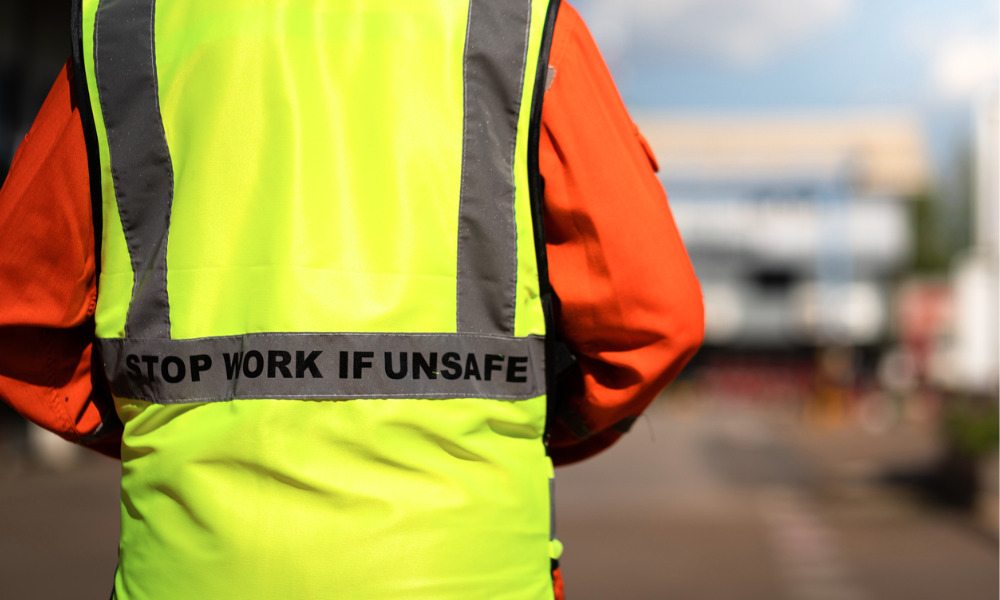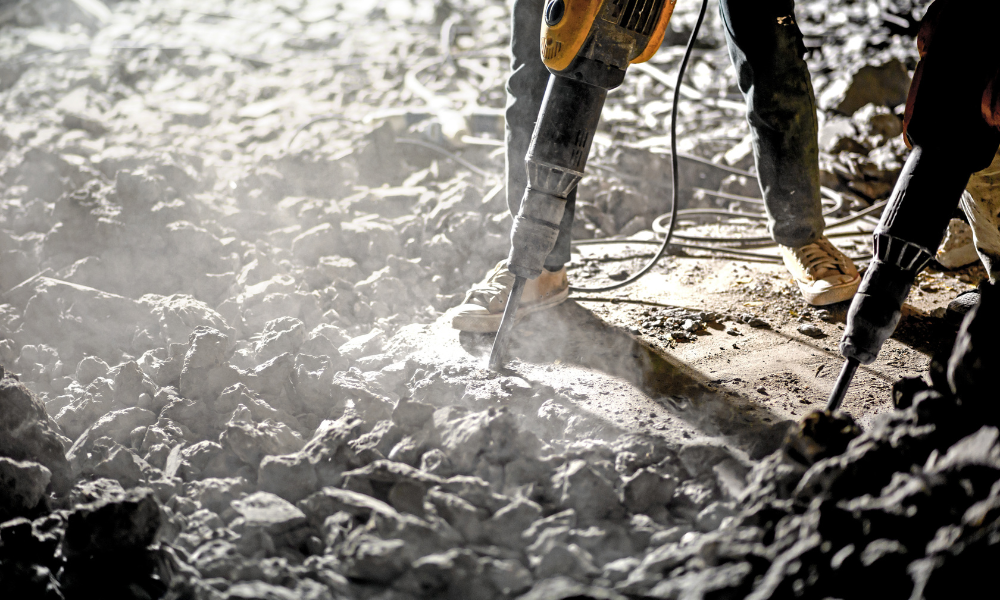OHS experts weigh in on the top trends this year

In this current climate, the future is very much a question mark. It is difficult to tell what the situation will be from one day to the next, let alone make any concrete statements about the next few months.
Luckily for us, to glean which trends are going to dominate the OHS space in 2021, we had an ace in our pocket. To compile this list, we looked to our esteemed editorial board for their valuable knowledge and insights.
These safety pros highlighted a number of trends to look out for this year and this will not come as a shock to any of you, but COVID-19 will absolutely continue to dominate health and safety conversations. The virus has burrowed its way into every aspect of how we live and work and this will certainly also be the case this year.
This has been a watershed year for the sector, and health and safety professionals have too often been the unsung heroes of this pandemic, ensuring the safety of workers around the country.
Now, they offer up what they think will be the key trends to look out for in 2021 and beyond.
1. Learning to live with COVID-19
“We’re not out of the woods with COVID — it’s so pervasive,” says Dan Strand, director of Prevention Field Services at WorkSafeBC.
“We are in this for the long haul and will need to be vigilant for some time. This is another area safety people need to be knowledgeable of not just generally aware but have a full understanding so they can guide their employers,” says Dave Gouthro, president of Occupational Health & Safety Consulting.
“The key thing with risk everyone needs to understand is a risk to the work force is by extension a risk to the organization,” he says. “Vaccines are not the magic bullet that will instantly fix the problem in the short term.”
One big challenge many safety professionals will continue to deal with in 2021 is handling ever-changing public health rules and navigating the ever-shifting requirements of the pandemic, says Laura Rourke, manager of Environment, Health & Safety at Tigercat International.
2. Risk management and support for businesses
With the continued threat of the pandemic in mind, it will be important to support small businesses. They have struggled more than larger businesses this year due to limited funding and/or access to additional help on the health and safety front.
This has certainly been a struggle for those businesses but also a wake-up call: “If you don’t build a safety program you’re out of business,” says Strand.
Indeed, according to independent senior safety advisor Guy Chenard, “The number one [trend] is going to be managing risk, and, specifically looking at the pandemic… we need to get a good grasp of it.”
He says companies that have a risk-based management system need to consider COVID-19 as one of those risks and see what they are doing to mitigate the pandemic. Although some larger companies may be able to do this well and can cope with risks or targets, some smaller companies may have a little more of a problem dealing with risks.
“I think that people need to be aware of the legislative requirements that are out there,” says Chenard. “We need to keep looking for information.”
3. Mental health in the workplace
“Because of COVID, we’ve seen an increased focus around mental health or psychologically healthy workplaces — I see that that is going to be even more so in 2021,” says Eldeen Pozniak, director of Pozniak Safety Associates.
That focus will continue post-pandemic also. Strand says there will be an “echo pandemic” that “will cause big challenges for employers.” Indeed, mental health has been of colossal importance in 2020 and going into this year. Workers across all industries are suffering, with those in the health-care field being particularly susceptible to mental health struggles and burnout.
The silver lining to this is that employees and employers have become much more open about mental health struggles. “We’ve been talking a lot more about depression and anxiety. Maybe it’s helped reduce some stigmas,” says Rourke.
“I’ve been trying to be the calm in the storm … and trying to find ways to keep everybody safe,” she says. The pandemic has been an opportunity to check in with people and learn more about them, says Rourke.
Mental health is important, says Chenard, not just at work but at home, too.
4. Adapting to working from home in the long term
“I think our workplace definition is going to change somewhat, because I think that that virtual workplace is definitely going to [remain] an issue in the first few months of 2021,” says Pozniak. “I think a lot of us have adapted to the face-to-face conversations that we're having virtually.”
Indeed, if organizations see that this is something that workers want and that it is good for both the company and the individual, then there are going to be a number of people who will continue to work from home, she says.
One new concern that stems from this, however, is how to adapt to working from home in the long term — notably with regards to workplace safety. This means looking into whether employees have the right equipment, access to a fire extinguisher, a smoke detector, etc. This also means providing workers with adapted ergonomic support.
Not everyone is going back to the office, says Strand, and employers need to look into how does the office help workers at home.
Ergonomics is also a huge concern for employees working on-site. “I am doing a lot right now with product safety,” says Rourke. This includes things such as what standards companies need to incorporate into their production or how they consider ergonomics to make work safe, she says. This is no doubt a big focus for many safety professionals.
5. A bigger focus on leadership and communication
“Every year,” says Chenard, “one trend is leadership. We need to emphasise it — it’s from the top and it needs to go all the way to the bottom,” he says. Management needs to set expectations and actually follow through.
Furthermore, this mentality is not just reserved for safety practitioners, says Chenard, as all leaders need to get out there and show that they care about safety.
Another big trend is communication. “I find that, in the field of occupational health and safety, we need to do a lot of communication,” says Chenard. And a lot of workers are actually interested in health and safety and should be, he says.
With many employees working from home (and planning to work from home this year), communication between workers and between employers and workers has been somewhat frayed.
“Face-to-face interactions play a key role in building engagement and trust, and losing those connections can affect the collaboration that is required to build a healthy and safe workplace,” says Strand.
Empathy will help build steps to elevate health and safety within an organization, he says.
“I see that there might be some increased support and engagement within the workplace. This will refocus on employee engagement, [workplace] culture and making sure that individuals, groups and the organization have their say,” says Pozniak.
Another key concept for organizations is the idea of continuous improvement. “Even if [you] had a good year, don’t sit on your laurels,” says Chenard.
6. Maintaining effective safety training
Safety professionals are looking into new ways to educate and train employees, despite disruptions brought about by the pandemic. “How can we change our communication and training to be effective in a time when we can’t get close to people?” asks Rourke.
A huge issue is figuring out how to train employees and how to maintain contact as well, which is a challenge in itself.
“We have to maintain things; we can’t just put things on hold forever,” says Rourke.
Online programs and digital learning have been a huge part of keeping training running. But part of communicating well with employees is also adapting the training to the worker. For example, some workers may not be inclined to do all of their training online or on a computer and may prefer an in-person approach if possible.
Pozniak says training and education will be a continued focus in 2021, with companies notably looking into virtual platforms or strategies for continuous learning and development. “I think that micro learning is also going to have an increased interest this year,” she says.
“The technology that's associated with safety has had a huge bump,” says Pozniak. An increased trend not just in 2021 but over the next couple of years is a change in the technology that is available to safety professionals. This will, for example, be tech that helps assess and control hazards.
7. The role of the safety professional is evolving
“The main trend I have encountered in the site or field operations concerns much more work upfront on my part preparing safety packages,” says Gouthro. Indeed, he says that pre-job start-up requirements now entail greater safety packages.
“This demonstrates a greater appreciation for due diligence … to include everyone in the chain of command,” says Gouthro.
“There is certainly a greater demand on safety folks to be more flexible,” adds Gouthro. “Safety on many fronts used to be confined to what many thought were safety-only issues, rules, procedures, etc. This was a misconception as to what contributes to impacting safety positively or negatively.”
Gouthro says this demand for greater flexibility — and by extension, education — is due to being asked to advise on other areas such as environment, HR issues, personnel conflicts, etc.
“These are areas which can impact the workforce as individuals and often as a group. How they are impacted, positive or negative, depends on not only how they are dealt with in the beginning but ongoing,” says Gouthro.
COVID-19 has taken the health and safety conversation to the mainstream and elevated the social acceptability of OHS, says Pozniak.
“I think that one of the trends in 2021 is that people [will have] those conversations a little bit more, that they're going to feel comfortable having those conversations,” she says. The pandemic has made health and safety more top of mind and has normalized it.
On that front, developing a safety community is paramount. Gouthro emphasizes the importance of developing your network as a safety professional. “I can’t emphasize this enough. This takes time and effort but will prove invaluable to you in your career.”
“Sometimes, I am asked what is my most valuable asset. My response is my network. I may not know the answer, but I’m pretty sure I know someone who does,” says Gouthro.
8. What will the post-pandemic landscape look like?
Strand predicts that the construction sector is going to boom. “It’s a desire by the government to stimulate the economy, and the easiest way to do that is by infrastructure spending,” he says.
This will help the population get work and will be certain to have a significant impact on workplace safety. Indeed, something to keep an eye on is how employers will handle this influx of new workers.
“On really significant projects,” says Strand, “they have to bring in talent from elsewhere. How does a pandemic continue to impact that?”
Safety professionals are hopeful about what the post-pandemic landscape will bring. “I think people throughout the chain of command will be much more aware of how risks have the potential to negatively impact their organizations. This will, hopefully, assist us to move the organization in a positive direction,” says Gouthro.
Although some companies have permanently shifted to telework, some employers are looking at returning to the office space. Resumption of office live will be a big deal, says Strand, who adds that we need to look into leveraging and building off new elements brought up by the pandemic.
There will also be new challenges, he says, and employers will have to contend with issues surrounding presenteeism, productivity, outsourcing, etc.





